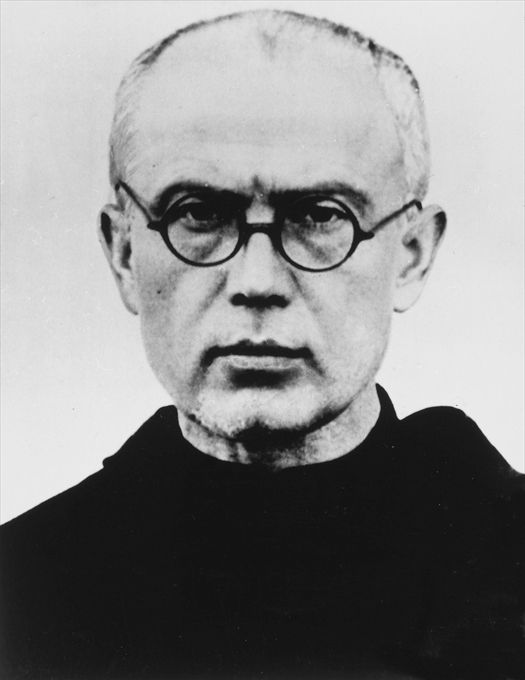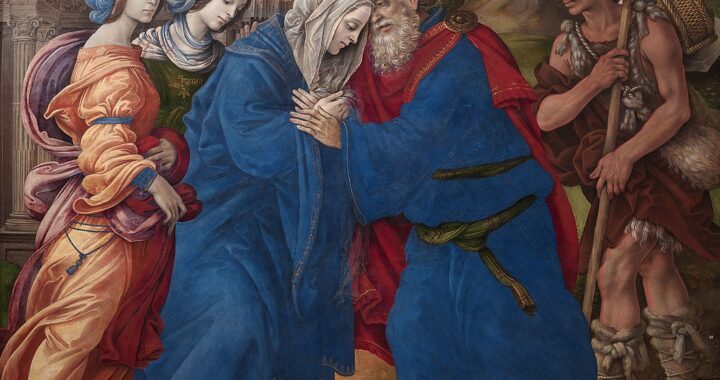
(photo taken in 1939),
Wikimedia Commons
Each year, my pastor reminds us parishioners that Saint Maximilian Maria Kolbe (1894-1941) continues to make sacrifices for our Blessed Mother, decades after he died. After all, since he is commemorated by the Church on the date of his death, August 14, the celebration of his feast day is always cut short by the celebration of the Solemnity of the Assumption of Mary the evening before. Of course, if you know anything about Maximilian Kolbe, you know that he would not mind that the Blessed Mother takes precedence over part of his feast day.
For those who need a reminder, Saint Maximilian was a priest who died as a martyr in the Auschwitz concentration camp in Poland during World War II. But there is much more to his biography than his martyrdom, and a great deal of his life story relates to the Blessed Virgin Mary.
Although Maximilian was pious from a young age, he was a typical boy and sometimes misbehaved. His mischievous activities got him in trouble so many times that on one occasion his exasperated mother wondered out loud what would ever become of him if he didn’t change his ways. Stung by the criticism, Maximilian turned to Mary that night in his prayers, and he asked for her heavenly help.
Amazingly, Mary appeared to him. She offered him two crowns, one white and the other red, and told him to choose between them. Proving that Maximilian was always a bit of an overachiever, he chose both, signifying his desire for a life of purity as well as martyrdom.
Maximilian was only thirteen years old when he attended a retreat led by Conventual Franciscans, and he was so moved by what he heard that he decided to enter that order. By the time he was a young man, his superiors had noticed his obvious intelligence and leadership ability, and they sent him to Rome to complete his studies. Even Rome was sometimes chaotic during World War I, but Maximilian earned a couple of doctoral degrees and was ordained a priest while in the Eternal City. He was also inspired to organize a group that he called the Militia of the Immaculata. Maximilian’s plan was to create an “army” of Catholics devoted to praying for the conversion of sinners and those who considered themselves enemies of the Church. All the prayers of his pious army would be directed to God through the intercession of the Blessed Virgin Mary.
Shortly after his ordination, Maximilian became ill with tuberculosis, an illness that forced him to stop his work as a seminary professor in Poland for a few years. But as soon as he had recovered from that potentially fatal condition, he jumped into another aggressive plan for the sake of Mary: he wanted to create entire cities devoted to promoting devotion to the Blessed Mother.
And so he did. In just a few years, Maximilian had established multiple communities that he called “Cities of the Immaculata.” Hundreds of friars under his direction printed materials which encouraged Marian devotion among the faithful. His cities started in Poland and spread all the way to Japan. At one point, the daily newspaper he had started reached a million Catholics.
But in 1939 the Nazi army invaded and occupied Poland. Maximilian and his friars were arrested, yet they were released a few months later. During the war, the buildings housing his printing apostolate also became a home for people from all religions and countries who had been displaced by the war.
On February 17, 1941, just hours after he had completed a comprehensive essay explaining the relationship between the Virgin Mary and the Holy Spirit, Maximilian was arrested and sent to Auschwitz. He had been in the camp for only five months when he quietly offered to take the place of another man who had been condemned to death. He died a martyr of charity, saving one man’s life and gently preparing his three companions to meet their Maker in peace while they all slowly starved to death.
What does the life of Saint Maximilian Kolbe teach us? Among other things, his life is proof that, by God’s grace, the saints can profoundly affect the lives of people who live long after them.
Maximilian told others about his childhood dream of the two crowns, but it wasn’t until after his martyrdom that this prediction was proved true. While Maximilian’s initial inspiration for his Militia of the Immaculata occurred in 1917, it wasn’t until decades later that his public association of the faithful began to spread all over the world. One of the Marian cities he established was located in Nagasaki, Japan, and no one has been able to explain how Kolbe’s community survived the explosion of a nuclear bomb, a miracle which occurred four years after his death. His writings about the Blessed Mother, particularly his final essay, are still being studied and might eventually cause him to be named a Doctor of the Church. As is obvious with the greatest saints, God often allows His “favorites” to inspire others to desire greater holiness, even many years into the future.
How can we love the Mother of God with the heart of Saint Maximilian Kolbe? Just as he did, we can ask for her help from Heaven when we don’t know what to do. We can look for ways to encourage others to turn to her in prayer. And we can give all the credit for any good we do to God, through the intercession of the gentle and motherly Virgin Mary.
